
Exoteleia is a genus of moths in the family Gelechiidae.

Gluphisia crenata, the dusky marbled brown, is a moth of the family Notodontidae. The species was first described by Eugenius Johann Christoph Esper in 1785. It is found in Europe, east over parts of Russia and China up to Japan. It is also found in North America, where it was traditionally treated as a separate species, Gluphisia septentrionis.

Stigmella trimaculella is a moth of the family Nepticulidae. It is found in most of Europe, east to the eastern part of Palearctic realm.

Leucoptera sinuella is a moth in the Lyonetiidae family. It is found in most of Europe, except Ireland, the Balkan Peninsula and the Mediterranean Islands. It is also found in Japan and North Africa.

Phyllonorycter populifoliella is a moth of the family Gracillariidae. It is known from all of Europe, except the British Isles.
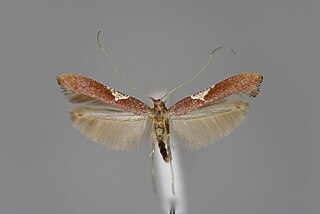
Caloptilia stigmatella is a moth of the family Gracillariidae. It is known from the Holarctic Region, including all of Europe.
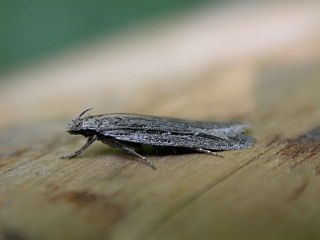
The juniper gelechiid moth is a moth of the family Gelechiidae. It is known from most of Europe. It is an introduced species in Great Britain and North America through accidental introduction in garden junipers.
Gelechia clandestina is a moth of the family Gelechiidae. It is found in Russia.

Chionodes distinctella, the eastern groundling, is a moth of the family Gelechiidae. It is found in almost all of Europe, as well as most of Russia, Kazakhstan, Central Asia and North Africa. The habitat consists of dry, rocky heath and meadows and the verges and rough pastures.
Chionodes holosericella is a moth of the family Gelechiidae. It is found in Norway, Sweden, Finland, Latvia, Estonia, France, Germany, Austria, Italy, Croatia, Slovakia, Ukraine and Russia. Outside of Europe, it is found in the Caucasus, from Siberia to the Magadan Oblast and in South Korea.
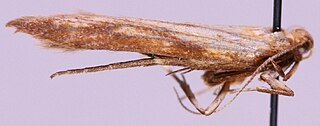
Metzneria neuropterella, the brown-veined neb, is a moth of the family Gelechiidae. It is found from most of Europe to the southern Ural Mountains, the Caucasus, southern and south-eastern Siberia and Mongolia, as well as in North Africa. The habitat consist of short-turfed, herb rich chalk downland.
Ptocheuusa paupella, the light fleabane neb, is a moth of the family Gelechiidae. It is found from central and southern Europe to the Ural Mountains. It is also found in Turkey and India.

Gelechia rhombella, the apple groundling, is a moth of the family Gelechiidae. It is found in Europe, the Caucasus, Transcaucasia, southern Siberia, the Russian Far East, Korea and China.
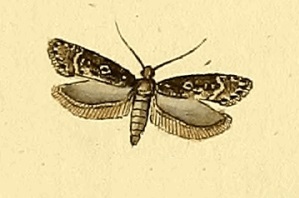
Gelechia sororculella, the dark-striped groundling, is a moth of the family Gelechiidae. It is widely distributed from Europe, throughout Siberia to the Russian Far East.
Gelechia jakovlevi is a moth of the family Gelechiidae. It is found in Finland, the Baltic region, Ukraine, the European part of Russia, Siberia and Mongolia.
Gelechia basipunctella is a moth of the family Gelechiidae. It is found in from central Europe to Russia, Turkey and Mongolia.
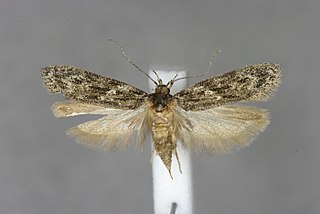
Gelechia muscosella, the grey sallow groundling, is a moth of the family Gelechiidae. It is found in Europe. It is also found in the Caucasus, Siberia and the Russian Far East.

Gelechia senticetella, the cypress groundling, is a moth of the family Gelechiidae. It was described by Otto Staudinger in 1859. It is found in most of Europe, including Austria, Belgium, Bosnia and Herzegovina, Croatia, Cyprus, France, Germany, Greece, Hungary, Italy, North Macedonia, Sicily, Slovakia, Spain, Switzerland and Ukraine. It is thought to be an introduced species in Great Britain.
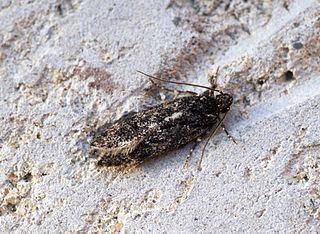
Gelechia nigra, the black groundling, is a moth of the family Gelechiidae. It was described by Adrian Hardy Haworth in 1828. It is found in most of Europe, except Ireland, the Iberian Peninsula and most of the Balkan Peninsula. The habitat consists of woodlands and river banks.
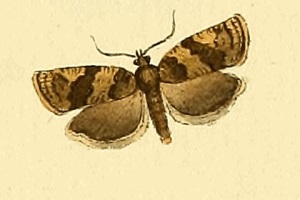
Choristoneura diversana is a species of moth of the family Tortricidae. It is found in Great Britain, France, Belgium, the Netherlands, Germany, Denmark, Austria, Switzerland, Italy, the Czech Republic, Slovakia, Slovenia, Poland, Bulgaria, Hungary, Romania, Norway, Sweden, Finland, the Baltic region, Russia and the Near East. In the east, the range extends to China (Heilongjiang), Korea and Japan. The habitat consists of gardens, scrub and fens.















